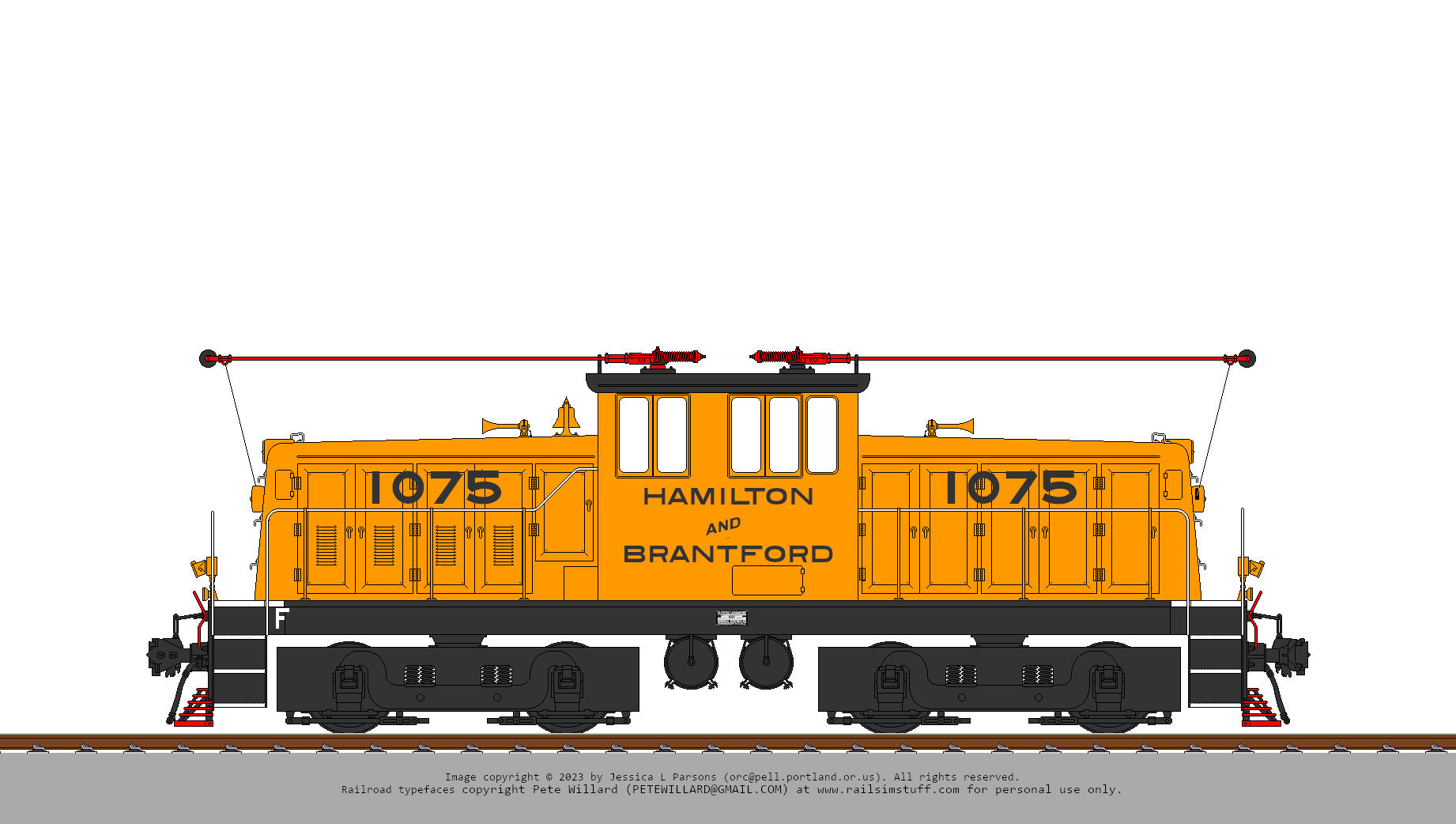In 1908(ish), the Brantford & Hamilton Electric Railway opened their line, then spent the next 20-odd years carrying passengers (and a tiny bit of freight) between the to respective cities.
What was likely to happen (and nearly did) was that their owners would see the macadam writing on the wall and hot potato the radial as soon as the automobile took enough riders away to tip the books into the red, except that in 1924, the line down Hess St (in Hamilton) was extended into the waterfront so the railway could make some money shuffling freight around, and then in 1926 a business (“Ancaster Kitchen Tools”) opened along the line and started shipping raw materials up from Hamilton to make into pots & pans & other kitchen-shaped implements of destruction, which meant that when it became obvious that Cataract Power was about to be purchased by Ontario Hydro it was time to buy the (struggling) radial to keep the supply lines going. It was 1928, and times were good, so why not roll the dice?
So they rolled, and it came up a natural 20.
The newly renamed Brantford & Hamilton Air Line kept running passenger trains (2 cars in hourly service; at 45 MPH they could make it from end to end in 25 minutes, which gave ample time to also fit a daily freight train into the mix) because of franchise obligations for as long as it could, but by the end of the 1930s the roads were improved enough so that even the promise of through running with the LE&N (“as soon as we change our electrification to 1500vdc, promise!”) wasn’t enough to support more than two morning and two afternoon commuter trains.
The second world war provided a respite; passenger numbers went up enough to go back to hourly service, freight traffic (obviously) improved, and the railroad was riding higher on the hog up until the day when the city of Hamilton yanked the street-running franchise as part of a beautification project (you can look at modern maps that show easily 50% of downtown as nothing but parking lots to see how that worked out) and the industrial trackage by the harbour was suddenly disconnected from the rest of the railroad. An expensive extension was built to connect the line from the foot of the escarpment over to a junction with the TH&B, but the previous midnight transfers up Hess became a more complicated thing involving a leased switcher & TH&B trackage rights.
Some money was made back when the harbour trackage was sold to the TH&B, and less money was lost when the (now no longer required by the franchise) passenger trains were withdrawn, and then, finally, the railway was switched to 1500vdc so it could through-run trains with the LE&N.
The now strictly freight Hamilton & Brantford Air Line then settled down as a purely industrial railway. Ancaster Kitchen Tools hadn’t survived the depression, but other businesses sprung up along the line to take its place.
In 1958, the radial’s head office was moved to the (now disused) Brantford Union Station, where it remains today.
In 1962, the radial was renamed again to (just) the Hamilton & Brantford, and it continued operating under that name until 1973, when it merged with the TSR to form the ORRC.
And in 2026, after the United Railways Trust merged with CPKC, the new harbour connecting line east of the Hamilton GO station was abandoned after the CPR electrified their harbour connecting line.
The H&B continues to operate as a shortline serving six companies between Ancaster & Brantford. The line down into Hamilton sees very little traffic, but is occasionally used for railfan specials and emergency freight moves.
